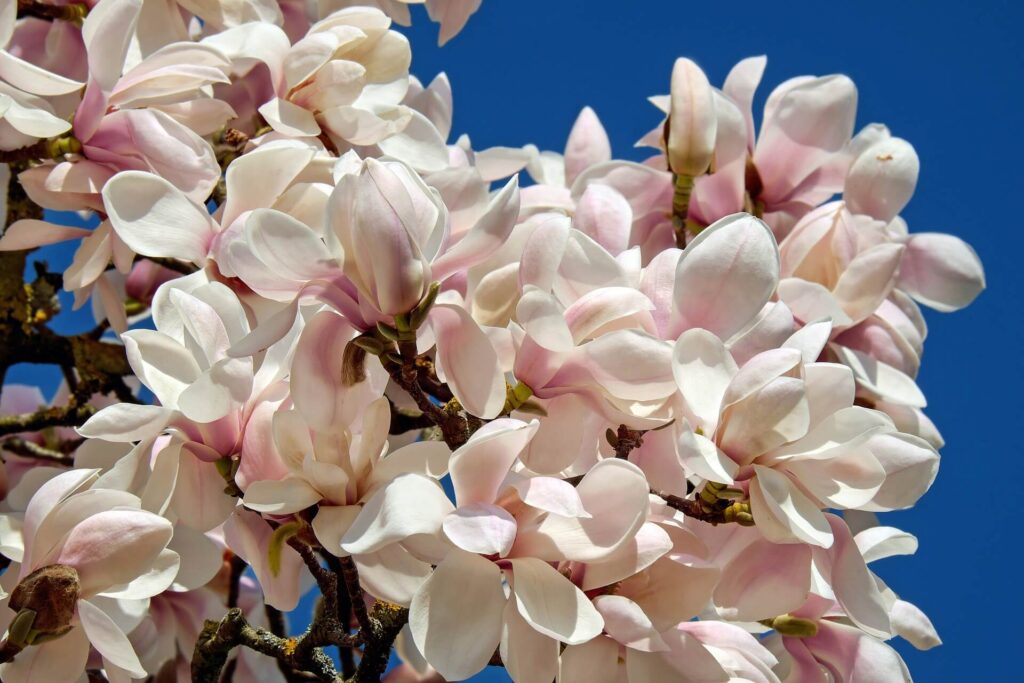Magnolia: A Majestic Addition to Your Garden
Magnolia, commonly known as magnolia tree, is a stunning garden plant celebrated for its large, fragrant flowers and glossy leaves. Here’s a comprehensive guide on growing and caring for Magnolia.

Types of Magnolia
Magnolia comes in various types, each with unique characteristics. Here are some common types:
| Type of Magnolia | Characteristics |
|---|---|
| Southern Magnolia | Large, evergreen leaves, white fragrant flowers, blooms in late spring to early summer. |
| Star Magnolia | Star-shaped white or pink flowers, blooms in early spring, compact size. |
| Saucer Magnolia | Large, saucer-shaped pink to purple flowers, blooms in early spring, deciduous. |
| Sweetbay Magnolia | Semi-evergreen, creamy white flowers with a lemony scent, blooms in late spring to early summer. |
Growing Season
Magnolia typically blooms from early spring to late summer, depending on the variety and climate.
| Season | Activity |
|---|---|
| Spring | Plant new Magnolia, fertilize, start watering regularly. |
| Summer | Continue watering, mulch to retain moisture and prevent weeds. |
| Fall | Light pruning, prepare for winter. |
| Winter | Minimal maintenance, protect young trees from severe frost if necessary. |
Sunlight and Water Needs
Magnolia thrives in full sun to partial shade, requiring at least 4-6 hours of direct sunlight daily. They prefer well-drained soil and need regular watering, especially in dry periods. Water deeply once a week, adjusting for weather conditions.
Soil Preferences
Magnolia prefers well-drained, slightly acidic to neutral soil.
| Soil Type | pH Level | Characteristics |
|---|---|---|
| Loamy Soil | 5.5-6.5 | Rich in nutrients, retains moisture well. |
| Sandy Soil | 5.5-6.5 | Drains quickly, may require additional organic matter. |
| Clay Soil | 5.5-6.5 | May need improvement for better drainage, add compost or sand. |
Fertilization and Nutrients
Magnolia benefits from light feeding. Use a balanced fertilizer in the spring to promote healthy growth and blooms.
| Season | Fertilization Type |
|---|---|
| Spring | Balanced fertilizer (10-10-10). |
| Summer | Balanced fertilizer if growth is slow. |
| Fall | No fertilization needed, prepare for winter. |
Pruning and Maintenance
Regular maintenance helps keep Magnolia healthy and blooming. Prune after flowering to maintain shape and remove dead or damaged branches.
Additional Tips for Growing Magnolia
- Mulching: Apply a layer of mulch around the base of your Magnolia to retain moisture and suppress weeds.
- Pest Control: Watch out for common pests like scale insects and aphids. Use organic treatments as necessary.
- Winter Protection: In colder climates, protect young Magnolia trees from frost by covering them with mulch or burlap.
Conclusion
Magnolia is a majestic addition to any garden, offering stunning blooms with minimal care. From selecting the right type of Magnolia to ensuring proper sunlight, water, and soil conditions, you can enjoy these beautiful trees for years to come.